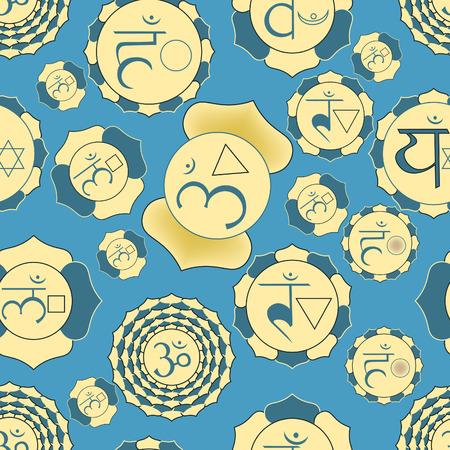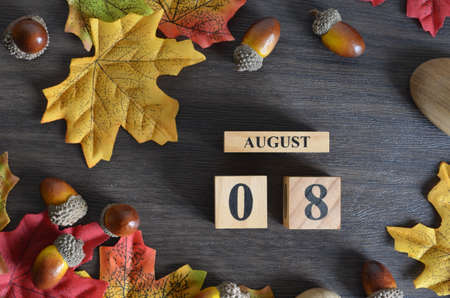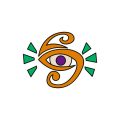Ancestral Echoes: Tarots Arrival on British Soil
When the tarot first drifted onto British shores, it carried with it a whisper of continental mystery—a deck of cards whose origins were entwined with Italian courts and French esotericism. Yet, as these enigmatic cards passed through the foggy alleys and manicured gardens of Britain, they began to absorb distinctly British flavours. In Victorian parlours, where curiosity about the unseen mingled with polite conversation and flickering candlelight, the tarot became more than a foreign curiosity; it transformed into a vessel for self-inquiry and hidden knowledge. The British fascination with secret societies—think the Hermetic Order of the Golden Dawn—wove new layers of ritual and symbolism into tarot’s fabric, blending ancient archetypes with homegrown mystique. These early encounters set the stage for a uniquely British interpretation of tarot: one that prized subtlety, intuition, and the quiet power of ancestral echoes.
2. Empire, Class, and Curiosity: The Victorian Lens
The Victorian era, with its paradoxical blend of progress and propriety, became fertile ground for the blossoming of modern tarot interpretations in Britain. At the heart of this transformation lay a unique interplay between empire, class structure, and an insatiable curiosity about the unseen realms. As British society expanded across continents, it encountered diverse mystical traditions—sparking both fascination and appropriation. Yet it was within the drawing rooms of London’s upper echelons and the parlours of burgeoning middle classes that tarot found a new narrative.
Victorian spiritualism offered a bridge between rigid social hierarchies and the tantalising promise of hidden knowledge. Séances, table-turning, and mediumship became fashionable pursuits among society’s elite—transcending mere entertainment to address deeper yearnings for meaning beyond material wealth. Tarot cards, once dismissed as foreign curiosities or gambling tools, were reimagined through this lens: not just as divinatory implements but as mirrors reflecting one’s inner landscape and societal role.
The Class Structure’s Influence on Tarot Adoption
| Social Class | Tarot Engagement | Common Practices |
|---|---|---|
| Aristocracy & Upper Middle Class | Intellectual curiosity; secret societies (e.g., The Hermetic Order of the Golden Dawn) | Esoteric study, symbolic reinterpretation, private readings |
| Middle Class | Domestic entertainment; self-exploration | Séances, parlour games, informal tarot spreads |
| Working Class | Cautious curiosity; folk traditions | Simple fortune-telling; blending with local superstitions |
The Blend of Rationality and Mysticism
The Victorians’ love affair with science paradoxically fuelled their hunger for spiritual exploration. Newspapers reported on séances with scientific gravitas; learned gentlemen debated the mechanics of the soul alongside steam engines. In this climate, tarot interpretation shifted from fatalistic pronouncements to psychological exploration—a precursor to modern intuitive reading styles. Cards like The Magician or The Hierophant took on layered meanings relevant to contemporary anxieties about power, identity, and social mobility.
A New Approach Emerges
This period also saw the rise of influential British occultists who codified tarot symbolism through distinctly Victorian sensibilities—most notably Arthur Edward Waite and Pamela Colman Smith. Their deck reflected a synthesis: mythic archetypes refracted through the prism of British society’s questions and aspirations. Thus, the Victorian era did not merely adopt tarot—it transformed it into a tool for self-discovery, societal critique, and imaginative possibility that continues to shape readings today.

3. The Hermetic Revival: Secret Societies and the Crafting of Symbolism
As Victorian England blossomed with curiosity for the occult and the unseen, a quiet revolution brewed behind the velvet curtains of London’s parlours. It was in this era that secret societies, most notably the Hermetic Order of the Golden Dawn, emerged as torchbearers for a new spiritual synthesis. These British intellectuals—poets, scholars, and visionaries—did not merely inherit ancient tarot wisdom; they meticulously reimagined it, weaving together threads from classical mythology, Jewish Kabbalah, and esoteric Christian mysticism. The result was a heady tapestry of symbolism that transformed tarot into a sophisticated spiritual language.
The Golden Dawn’s influence cannot be overstated. Members such as Arthur Edward Waite and Pamela Colman Smith, who crafted the iconic Rider-Waite-Smith deck, infused their creations with layers of meaning drawn from their eclectic studies. Tarot cards became vessels for archetypes that resonated with both British folklore and universal truths. The High Priestess, for example, took on aspects of Sophia—the divine feminine wisdom in Christian mysticism—while the Tree of Life from Kabbalistic tradition mapped itself across the journey of the Major Arcana.
This period saw British society’s love affair with ritual and secrecy mirrored in tarot’s imagery: cloaked figures, mysterious temples, and cryptic symbols that invited seekers to look beyond the surface. Through these cards, British practitioners found a way to reconcile rational inquiry with intuitive knowing—a typically British balance of head and heart. Thus, modern tarot interpretations owe much to these secret societies’ blend of rigorous scholarship and imaginative mythmaking, which continues to enchant readers on both sides of the Channel.
4. Language, Wit, and the British Psyche in Tarot Narratives
When delving into how British society has shaped modern tarot interpretations, one cannot overlook the profound influence of language, wit, and the uniquely British psyche. The art of storytelling is deeply woven into the cultural fabric of the UK—from Shakespeare’s layered dramas to the dry humour found in a local pub conversation. This narrative tradition colours not just the way tarot cards are read but also how their meanings are intuitively interpreted and shared.
British tarot readers often employ a blend of wry observation and gentle irony in their readings. The ability to see both the light and shadow sides of any situation—often with a knowing wink—reflects the famous British stiff upper lip coupled with a subtle, self-deprecating humour. Instead of offering grandiose predictions, many British readers guide querents through their stories with understated insight, preferring questions that open doorways rather than definitive answers.
In readings, the language chosen is rarely direct or prescriptive; instead, it is rich with metaphor and suggestion. British readers might describe The Tower not as disaster but as “a necessary clearing of old cobwebs,” or The Fool as “an invitation to take a leap—no pressure, mind you.” This nuanced approach allows for an intuitive dance between reader and querent, where meaning emerges organically from conversation, much like a fireside chat on a rainy afternoon.
The Role of Storytelling and Wit in Card Interpretation
| Tarot Card | Traditional Meaning | British Narrative Twist |
|---|---|---|
| The Tower | Sudden upheaval or change | “Time for a spring clean; sometimes we need a bit of chaos to dust off the old wallpaper.” |
| The Fool | New beginnings, naivety | “Every adventure starts with a good cup of tea and maybe forgetting your umbrella.” |
| The Hermit | Introspection, solitude | “A bit of alone time never hurt anyone—just you, your thoughts, and perhaps the cat.” |
| The Lovers | Union, choices in relationships | “Matters of the heart can be as tricky as a family dinner—best approached with patience and wit.” |
| Death | Transformation, endings | “Not an ending so much as turning over a new leaf—think of it as changing seasons rather than doom.” |
Intuitive Insight: The British Way
This subtle interplay between wit and wisdom creates tarot readings that feel less like fortune-telling and more like being gently nudged by a wise friend who knows when to offer advice—and when to simply listen. The intuitive insight prized in Britain is less about dramatic revelations and more about finding meaning in the ordinary moments. It’s this quality—the blending of everyday magic with sharp perception—that continues to shape how tarot is experienced across Britain today.
5. From Parlours to Pavements: Tarot in Contemporary British Culture
If you wander through the bustling streets of London, the vibrant lanes of Manchester, or the historic heart of Edinburgh, you’ll find that tarot has stepped confidently out from smoky Victorian parlours onto the very pavements of modern Britain. Today, tarot is no longer a secretive pastime whispered about over tea and crumpets; it’s woven into the fabric of everyday British life, resonating through television shows, lively festivals, and the hearts of a new generation navigating an ever-changing urban landscape.
The Screen’s Spell: Tarot on British Television
British television has long been fascinated with the mystical. From documentaries exploring psychic phenomena to popular series featuring tarot readers as quirky confidantes or mysterious guides, the cards have become familiar faces on the small screen. These portrayals often reflect and reshape public perception—sometimes reinforcing stereotypes, but also inviting curiosity and open-mindedness. Through these narratives, tarot becomes accessible, demystified, and part of water-cooler conversations across the nation.
Festivals and Fairs: Tarot Finds Its Tribe
Each summer, fields across Britain bloom not just with wildflowers but with tents and stalls where seekers gather for holistic fairs and music festivals. Here, tarot readers offer their services alongside healers and artists, attracting a diverse crowd united by a hunger for insight and connection. The atmosphere is one of acceptance—where ancient wisdom meets indie spirit—and tarot readings become shared moments of reflection beneath bunting flags and open skies.
Diversity on the Cards: Urban Life and New Generations
Perhaps nowhere is tarot’s transformation more apparent than in Britain’s cities. Here, young creatives from myriad backgrounds use tarot not only as a tool for personal guidance but as a language for art, activism, and identity. Pop-up reading sessions in cafes, zine publications exploring card symbolism through multicultural lenses, and online communities buzzing with fresh interpretations all signal that modern British tarot is as diverse as its people.
The Spirit of British Curiosity Continues
From parlours to pavements, from tradition to innovation, British society continues to shape how tarot is interpreted and embraced. In every corner of contemporary culture—whether on television screens or festival fields—tarot reflects Britain’s ever-evolving character: curious, inclusive, quietly mystical yet boldly forward-looking. As new generations pick up the cards, they weave their own stories into this living tradition—ensuring that the magic of tarot remains alive on British soil.


